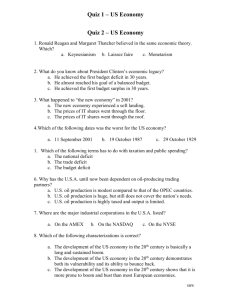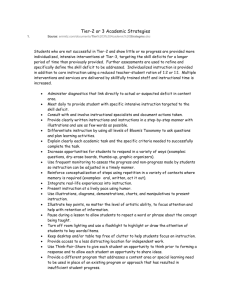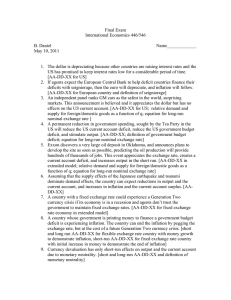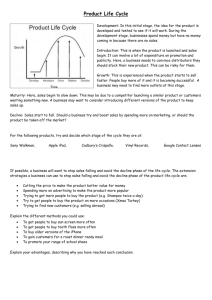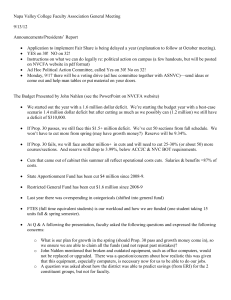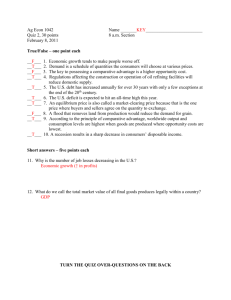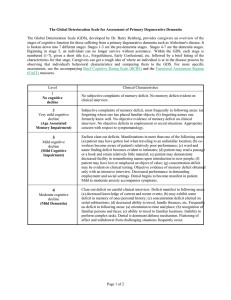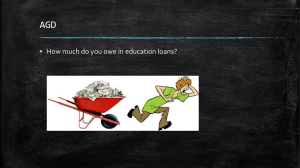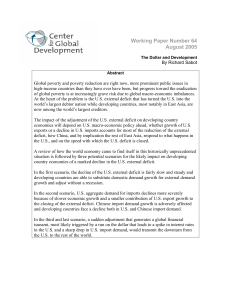Signs of crisis
advertisement
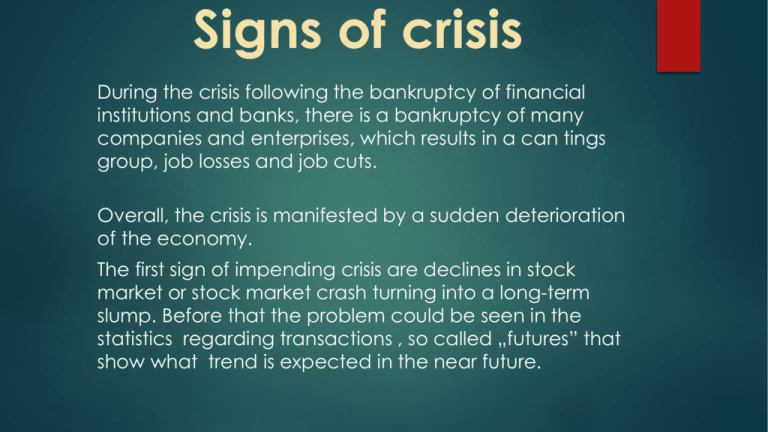
Signs of crisis During the crisis following the bankruptcy of financial institutions and banks, there is a bankruptcy of many companies and enterprises, which results in a can tings group, job losses and job cuts. Overall, the crisis is manifested by a sudden deterioration of the economy. The first sign of impending crisis are declines in stock market or stock market crash turning into a long-term slump. Before that the problem could be seen in the statistics regarding transactions , so called „futures” that show what trend is expected in the near future. The symptoms of the crisis are: galloping inflation turning into hyperinflation decline in production decline in wages or salaries decline in employment rate decline in income decrease in consumption decline in investment drop of GDP increase in unemployment increase in the budget deficit increase in the fiscal deficit downward trend in tax revenues of the state budget slows of the growth rate of industrial production reduced rate of exports and business investment The most important concepts related to the economic crisis Inflation-the process of growth of the general price level Types of inflation according to the criterion of the rate: creeping -does not exceed 5% per year moderate inflation -is in the range of 5% - 10% per year galloping - annual price increase of minimum 50% hyperinflation-monthly increase in prices of more than 150% Unemployment Unemployment-Unemployment occurs when a person who actively searches for employment is unable to find work. Long-term unemployment – when unemployed a person remains out of work for at least 12 months in the past 24 months The budget deficit The budget deficit - occurs when expenditures in the budget of the institution are higher than its income The budget deficit may be due to: - excessive budget spendings (the militarization of the economy, expanded government structure, public investments, transfers, high maintenance of the costs of foreign and domestic debt) -too low budget revenue, which may result from the low tax rate, little effective tax collection system or from falling levels of production and national income -public expectations that the state will fulfill a guarantor features of social safety, funding part of the consumption of poorer parts of society - methods to establish the budget in a parliamentary system. Various social forces - on the one hand are interested in minimizing taxes, on the other hand maximizing spending. However, no one is interested in balancing income with expenditure. Trade deficit -An economic measure of a negative balance of trade in which a country's imports exceeds its exports. A trade deficit represents an outflow of domestic currency to foreign markets. Consumption -in macroeconomics , it regards household spending on goods Consumption -in macroeconomics , it regards household spending on goods In this sense , we distinguish autonomous consumption and additional one. Autonomous consumption is independent of income. Additional consumption is, however, conditional on the amount of income ; it means expenditures for goods that are not essential for life .
